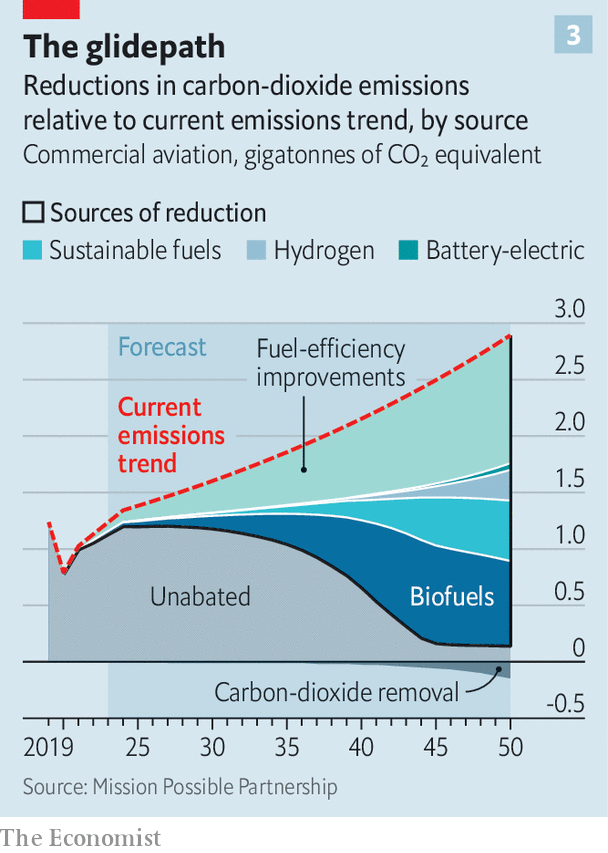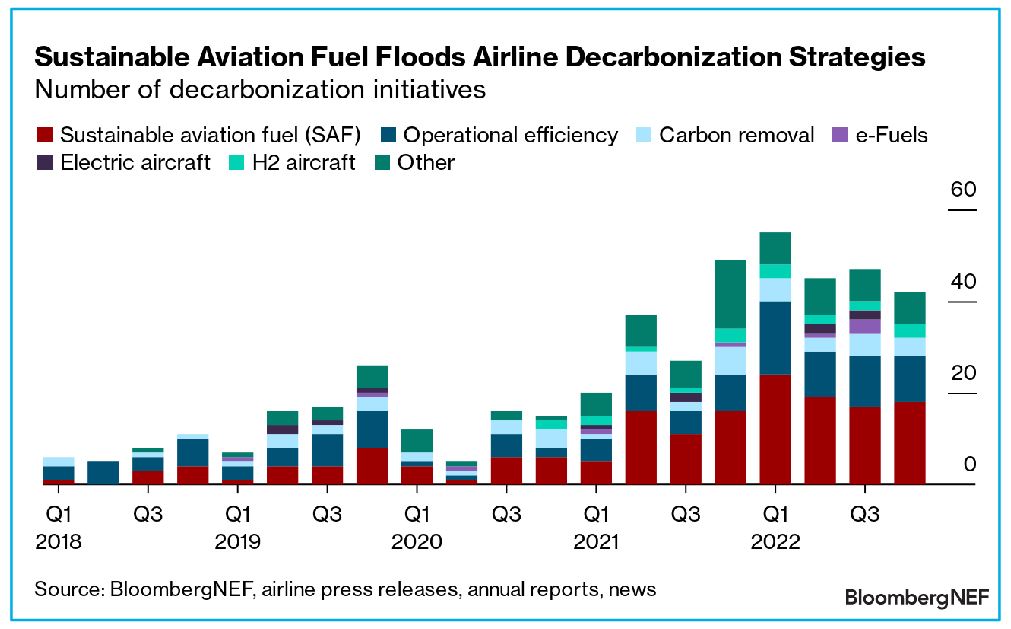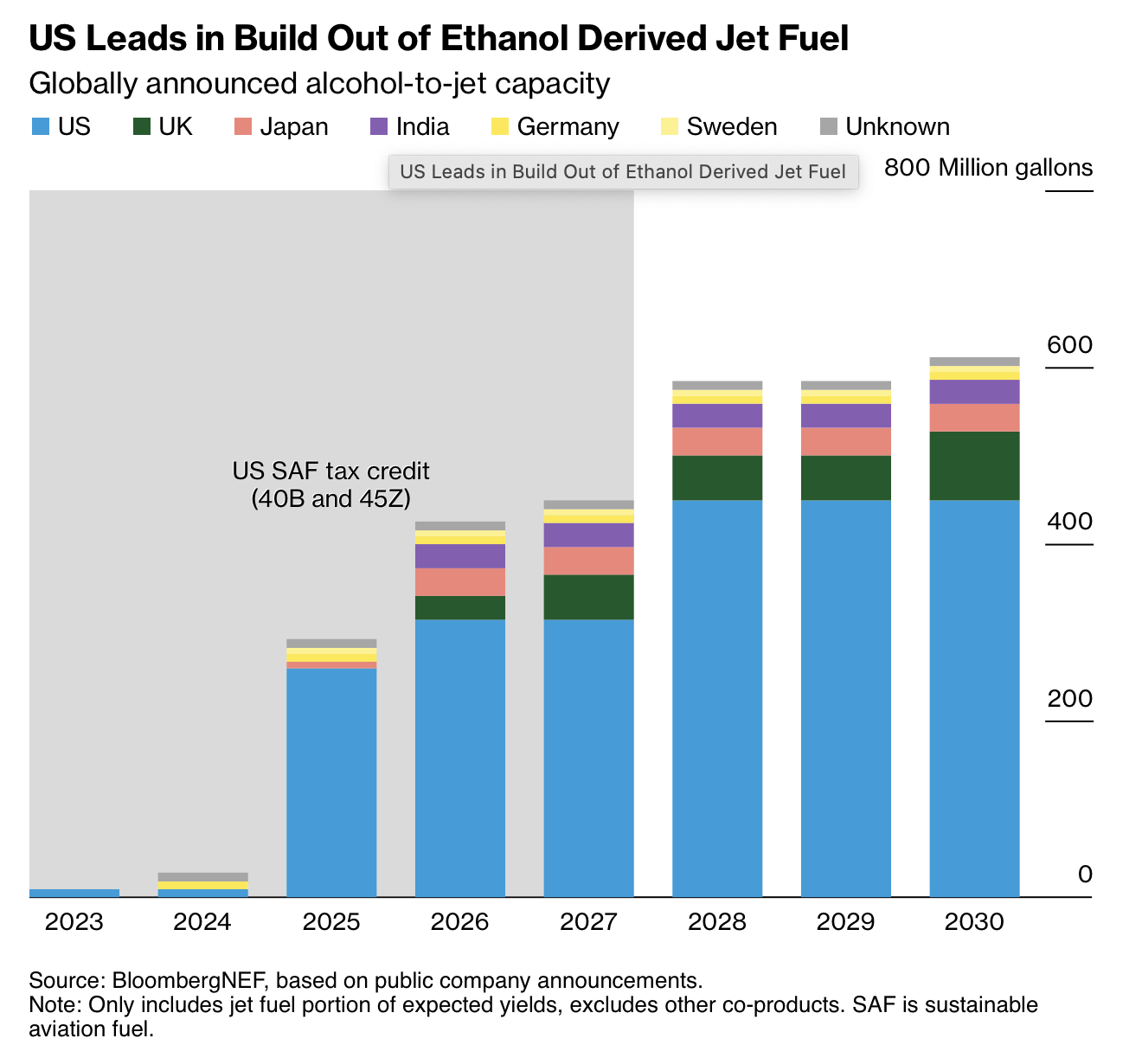What better way to understand concepts big and small than through data visualizations? In this blog series, we bring you a collection of visuals on events, academic theories, and insights around economics and transportation, especially — but not exclusively — from academia and news organizations. Join us to explore and engage with interesting and insightful data visualizations from creators around the world.
Ever since the proliferation of air travel, the world has shrunk in size and become more connected. Improving economic conditions and reducing airfares have made flying accessible, guaranteeing the industry’s growth in the coming decades. However, this is not entirely positive, as it means a rise in the industry’s share of global CO2 emissions, which currently stands at 2.5%. This week’s Data Vizdom delves into the increasing interest in sustainable aviation fuels to reduce the impact of flying.
Over the years, the quantity of fuel burned per passenger-km has reduced at a CAGR of 3.4%. A significant portion of this increased efficiency is attributable to improved engines, with each new generation of aircraft achieving a 15-20% gain over its predecessor. Gains from increasing seat density and loads have reached their ceiling. Further design innovations can be expected to yield gains but will come at a significant monetary cost.

Fuel efficiency: Why airlines need to switch to more ambitious measures – McKinsey & Company (March 1, 2022)
This has necessitated alternative approaches to reduce fuel consumption and emissions reduction in general. Sustainable aviation fuels offer a promising compromise as it matches the relevant properties of jet fuel and also does not require the large R&D investment of hydrogen and electric planes.
Emitting up to 80% less greenhouse gas than conventional jet fuel, sustainable aviation fuels can be produced from a variety of non-fossil fuel sources such as used cooking oil, animal fats and food crops. The ability to utilize what is generally wasted and reduce emissions offers great value, which will make sustainable aviation fuels a major source of emission reduction in the aviation industry by 2050.

The aviation industry wants to be net zero—but not yet – The Economist (May 14, 2023)
Boeing has promised that all of its planes will be capable of running on sustainable aviation fuels by 2030. This commitment is echoed throughout the industry, with sustainable aviation fuels being the most popular decarbonization initiative undertaken to meet climate goals.

Sky-High Cost of Clean Aviation Isn’t Fazing Airlines Yet – BloombergNEF (June 6, 2023)
While it is straightforward to make the switch to sustainable aviation fuels, there is a significant lack of production to meet the industry’s demand. In 2024, the industry consumed over 250 million tonnes of jet fuel compared to the measly 0.24 million tonnes of sustainable aviation fuel. Furthermore, sustainable aviation fuel currently costs more than twice as much per tonne as conventional jet fuel.

Green air travel: why synthetic fuel prompts genuine excitement – Financial Times (December 10, 2023)
To improve production and bring down costs, many airlines and energy companies around the world have announced joint ventures. The production of ethanol-based sustainable aviation fuel is expected to ramp up exponentially by 2025, with almost all of it concentrated in the food crop-rich United States.

Why Green Air Travel Will Save US Corn Farmers From Extinction – Bloomberg (September 26, 2023)
In conclusion, as countries implement regulations mandating the aviation industry to adopt sustainable aviation fuels, it is crucial to rapidly scale production to meet increasing demand. Allocating a greater proportion of food crops for fuel production will significantly impact water usage and availability for nutritional purposes. Success in producing sustainable aviation fuels using carbon captured directly from the air could provide an answer.
Help us make this series even better! We would love to hear about sources we should follow to discover interesting projects and visualizations. Write to Bilal Siddika on LinkedIn or via email.
